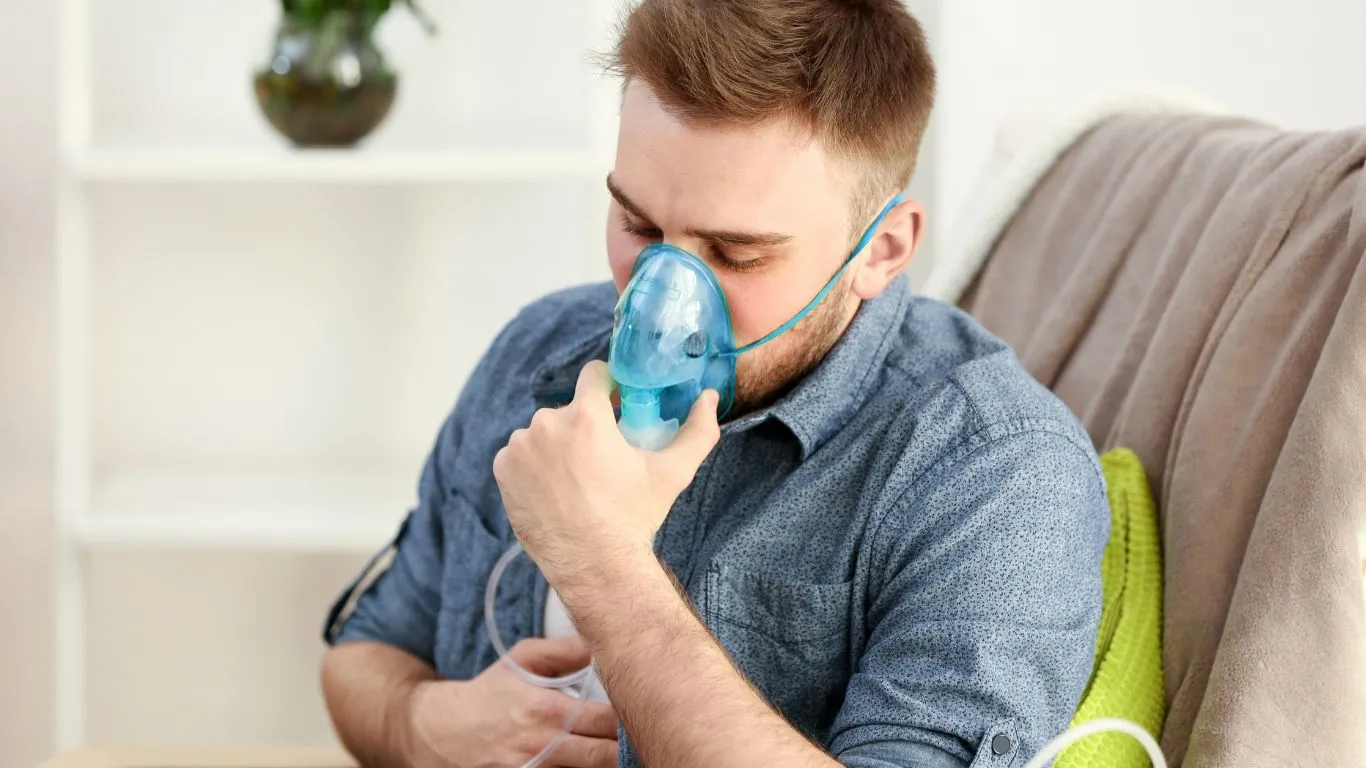Can Asthma Cause Sharp Pain Under Ribs? Discover the Truth Now
As someone with years of experience as a pulmonary nurse, I’ve had my fair share of patients coming in with a variety of respiratory issues. Among them, asthma is one of the most common and, at times, misunderstood conditions. One of the most frequently asked questions I get is: “Can asthma cause sharp pain under the ribs?” Well, that’s exactly what we’re diving into in this article. The short answer is yes, it can. But there’s a lot more to it than just a simple yes, and I’ll explain why, based on both my experience and what the research shows.
What Causes Sharp Pain Under the Ribs in Asthma?

If you’ve ever had a sharp pain in your chest or under your ribs while experiencing asthma, you’re not alone. It’s something that can happen to anyone with asthma, and it’s often a side effect of the body’s reaction to asthma symptoms. So, what exactly is happening? First, let’s take a step back and understand asthma itself.
Asthma is a chronic condition that affects the airways, causing them to narrow and become inflamed, making it difficult to breathe. During an asthma attack, this inflammation worsens, and you may experience symptoms like wheezing, coughing, and shortness of breath. But it’s not just your lungs that are involved—your diaphragm and the muscles surrounding your ribs also play a significant role in the discomfort. When you’re struggling to breathe, these muscles can become tense, leading to a feeling of tightness or sharp pain in the chest and ribcage area.
The Connection Between Asthma and Rib Pain
Let’s dig a little deeper into how exactly asthma can lead to this kind of sharp pain. Asthma affects not only the lungs but also the muscles used in the process of breathing. The diaphragm, which helps you breathe by moving up and down, is often under more strain during an asthma attack. This can result in soreness or even a sharp, stabbing pain beneath the ribs. Additionally, the muscles between your ribs, called the intercostal muscles, can become overworked and strained from the effort of breathing harder than usual, which can also cause pain in the rib area.
- Increased breathing effort: During an asthma attack, your body works overtime to bring in oxygen. This leads to excessive use of the chest and abdominal muscles, which can contribute to sharp pain under the ribs.
- Diaphragm strain: Asthma affects the way your diaphragm moves. If you’re having trouble breathing, the diaphragm may be pushed harder, resulting in discomfort or pain.
- Chest tightness: The feeling of tightness in your chest is common during asthma attacks. This tightness can sometimes be so severe that it feels like pain, especially under the ribcage.
When Is Rib Pain from Asthma a Cause for Concern?

While rib pain in asthma is often benign and linked to muscle strain, there are instances when it could signal something more serious. If you experience sharp pain under the ribs that doesn’t go away, or if it’s accompanied by other concerning symptoms like dizziness, fainting, or significant difficulty breathing, it’s important to seek medical help immediately. These could be signs that the asthma attack is more severe than usual, or it could point to another underlying issue, like a respiratory infection or even a heart problem. As someone who has seen countless asthma attacks in the emergency room, trust me when I say: it’s always better to err on the side of caution.
Recognizing Severe Asthma Attacks
Sometimes, rib pain can also be a sign that your asthma is not well-controlled. If you’re experiencing frequent asthma attacks or if you notice your symptoms are becoming more severe or harder to manage, it may be time to revisit your asthma treatment plan. In my experience, many patients overlook the importance of consistent asthma management, thinking that symptoms like rib pain or chest tightness are just part of the disease. However, asthma should be controlled, and constant pain or difficulty breathing is a sign that something may need adjustment in your treatment regimen.
- Increased shortness of breath: If your shortness of breath has suddenly become worse and is not improving with your usual medication, this could be a red flag.
- Chest tightness: Persistent chest tightness that doesn’t go away with your normal inhaler or medications could signal a severe flare-up.
- Wheezing and coughing: If you’re wheezing or coughing more than usual, especially after using your inhaler, it could mean your asthma is not under control.
Can Asthma Be Managed to Prevent Rib Pain?

Managing asthma is essential to preventing rib pain and other symptoms. Fortunately, with the right treatment plan, most people with asthma can avoid the worst of their symptoms. The goal is not just to treat the asthma attacks when they happen, but to prevent them from happening in the first place. This is where medication and lifestyle changes come in.
Medications: Most asthma patients use inhalers to manage their symptoms. There are two main types of inhalers: reliever inhalers and preventer inhalers. Reliever inhalers provide quick relief during an attack, while preventer inhalers work over time to reduce inflammation in the airways, preventing future flare-ups. In my experience, it’s crucial for patients to stay consistent with their preventer inhalers, even when they feel fine. Skipping these medications can lead to more frequent attacks and more rib pain in the long run.
Lifestyle Changes: Along with medication, making certain lifestyle changes can significantly reduce asthma symptoms. For instance, avoiding known asthma triggers, like dust, smoke, and allergens, can help keep your airways calm and prevent painful attacks. Additionally, staying active and maintaining a healthy weight can improve overall lung function, reducing the frequency and severity of asthma symptoms, including rib pain.
Asthma may cause sharp pain under your ribs, but with proper management and a personalized treatment plan, it’s possible to reduce and even prevent these painful flare-ups. If you’re unsure about your current treatment plan or experiencing symptoms like persistent rib pain, don’t hesitate to talk to your healthcare provider. After all, effective asthma management is the key to living without those sharp, uncomfortable reminders of your condition.
How to Differentiate Between Asthma-Related Rib Pain and Other Causes

When you’re dealing with asthma, it can sometimes be tricky to tell if your rib pain is simply a byproduct of the condition, or if something else is going on. I’ve had patients come in thinking their rib pain is linked to something like a heart attack, or even a rib injury, only to find out that it’s just their asthma causing that discomfort. But that’s where things get tricky—because rib pain can come from a variety of sources, and it’s important to know how to differentiate them. So, let’s break this down.
Asthma Pain vs. Heart-Related Pain
One of the first things people worry about when they feel sharp pain under the ribs is whether it’s heart-related. After all, chest pain can be a sign of a heart attack, and when you’re already struggling to breathe, it can understandably feel like a serious issue. However, asthma-related rib pain and heart-related chest pain tend to feel very different. From my experience, asthma pain usually comes with a clear connection to breathing difficulties, like wheezing, coughing, or tightness in the chest.
Heart-related pain, on the other hand, might feel more like a heaviness or pressure in the chest, often accompanied by sweating, nausea, dizziness, or pain radiating to other areas like the arms or jaw. If you’re experiencing any of these additional symptoms alongside sharp rib pain, it’s important to seek immediate medical attention. Trust your instincts—don’t take chances when it comes to your heart!
Asthma vs. Rib Injuries
Another common concern is whether a rib injury could be causing the pain. If you’ve recently had a fall, been in an accident, or even just engaged in some intense physical activity, you might have a bruised or fractured rib that’s making it painful to breathe. The difference here is that rib injuries typically cause localized pain that worsens with movement or touch, while asthma-related rib pain is more likely to be tied to breathing difficulties or an asthma attack. If you’re unsure, a quick check with your doctor or healthcare provider can rule out any injuries.
- Asthma pain: Often linked to difficulty breathing, wheezing, or coughing, and usually felt along the sides of the rib cage.
- Heart pain: Often feels like pressure or tightness in the chest, with other symptoms like dizziness or pain radiating elsewhere.
- Rib injury: Pain is usually sharp and localized, worsens with movement, and may be tender to the touch.
When to Seek Medical Help for Asthma-Related Rib Pain

While mild rib pain caused by asthma can usually be managed at home, there are times when you should definitely seek medical attention. Based on my experience in the pulmonary care field, these are some of the key red flags to watch for:
1. Persistent or Worsening Pain
If the sharp pain under your ribs continues for hours, days, or gets worse with each asthma attack, it’s time to reach out to a healthcare provider. While some muscle soreness is normal after an asthma episode, persistent pain might indicate that your asthma is not well controlled or that there’s an underlying issue that needs attention. Don’t just brush it off as part of your asthma—it could be a sign that your treatment plan needs adjusting.
2. Difficulty Breathing or New Symptoms
Another key indicator is if you’re suddenly experiencing more difficulty breathing than usual. If the rib pain is accompanied by increased shortness of breath or a feeling of suffocation, this could signal a more severe asthma attack or even an exacerbation. In these cases, using your inhaler may not be enough to relieve symptoms, and you might need additional medications or a trip to the ER to stabilize your breathing. It’s always better to be safe than sorry when it comes to severe respiratory distress.
3. Chest Tightness that Doesn’t Improve
Asthma often comes with chest tightness, but if this sensation of pressure doesn’t improve after using your rescue inhaler or other prescribed medications, it’s a sign that your asthma may need more intensive management. For some patients, long-term control medications may not be doing enough to reduce inflammation in the airways, and that can lead to ongoing discomfort, including rib pain. It’s crucial to revisit your medication routine with your healthcare provider to see if any adjustments need to be made.
Tips for Preventing Asthma-Related Rib Pain

Managing asthma doesn’t just mean handling flare-ups when they happen; it’s about taking proactive steps to prevent them from occurring in the first place. And in my experience, a little prevention can go a long way in avoiding rib pain and other discomforts associated with asthma. Here are some practical tips to help you stay ahead of the game:
1. Consistent Medication Use
One of the most important things I can emphasize is the need to take your medication consistently, even when you feel fine. Asthma doesn’t just disappear, and skipping doses of your inhaler or other medications can leave your airways more susceptible to irritation, making you more prone to attacks and related rib pain. Make sure you’re using both your rescue inhaler (for flare-ups) and your long-term control inhaler (to reduce inflammation) as prescribed.
2. Monitor Your Symptoms
Keeping track of your symptoms can help you spot potential problems before they become serious. Tools like asthma diaries or apps that track your breathing and medication use can provide useful data for you and your doctor. If you notice any changes in your asthma pattern, be sure to discuss it with your healthcare provider to adjust your treatment plan accordingly.
3. Avoid Known Triggers
Asthma triggers vary from person to person, but some common culprits include allergens like pollen, dust mites, and pet dander, as well as irritants like smoke or strong chemicals. Being proactive about avoiding these triggers is one of the best ways to prevent asthma flare-ups and the associated rib pain. I always advise my patients to keep their living spaces clean, use air purifiers, and try to stay away from known environmental irritants. Wearing a mask in certain situations or taking antihistamines when exposed to allergens can also help keep symptoms at bay.
4. Stay Active and Keep Your Lungs Healthy
While it might seem counterintuitive to exercise when you have asthma, staying physically active can actually improve your lung function over time and help prevent symptoms. Of course, you should always check with your doctor before starting any new exercise routine, but gentle activities like walking, swimming, or yoga can work wonders for your breathing and overall health. Just be sure to warm up and cool down properly, and keep your inhaler on hand in case you need it during or after your workout.
Preventing asthma-related rib pain is about more than just managing the immediate symptoms. By sticking to a consistent treatment plan, avoiding triggers, and staying active, you can greatly reduce the likelihood of dealing with rib discomfort in the first place. If you’re finding that your symptoms aren’t improving despite your best efforts, don’t hesitate to consult with a healthcare professional to fine-tune your approach.
Managing Asthma Pain: Real-Life Tips and Strategies

By now, you should have a solid understanding of how asthma can lead to sharp pain under the ribs, as well as how to manage and prevent these flare-ups. But let’s dive deeper into some practical, real-life strategies I’ve seen work wonders for patients over the years. As a pulmonary nurse, I’ve had the privilege of working with countless individuals with asthma, and one of the most rewarding parts of my job is helping people live their lives without being held back by their symptoms. Here are a few tried-and-true methods to help you manage asthma pain and feel more in control of your health.
1. Breathing Exercises: The Power of Controlled Breathing
One of the first things I teach asthma patients is the importance of controlled breathing techniques. Asthma is, at its core, a breathing disorder, so learning how to breathe effectively can make a huge difference in managing pain and symptoms. There are a few specific breathing exercises that are great for reducing rib pain and preventing future flare-ups:
- Diaphragmatic Breathing: This technique focuses on using your diaphragm, not your chest, to breathe. It helps you take deeper, more controlled breaths, which can alleviate the strain on your chest muscles and ribcage. I recommend practicing this regularly, even when you’re not having a flare-up, so your body becomes accustomed to more efficient breathing.
- Pursed-Lip Breathing: This is particularly helpful during an asthma attack. By exhaling slowly through pursed lips, you help keep your airways open longer and make it easier to expel trapped air. This can reduce the feeling of tightness in your chest and relieve some of the associated rib pain.
- Buteyko Method: A technique that focuses on shallow breathing to help reduce hyperventilation. It’s been shown to help asthma patients reduce their reliance on inhalers and prevent asthma attacks.
In my experience, patients who make time for these breathing exercises daily tend to experience fewer and less severe asthma attacks, leading to less chest and rib pain overall. Try incorporating these practices into your routine, and remember: the more consistent you are, the better your results will be!
2. The Importance of Physical Activity
I know that when you’re struggling to breathe, the idea of exercising can feel like the last thing you want to do. But hear me out—staying active is one of the most important things you can do for your asthma, and it actually helps reduce rib pain in the long run. Regular physical activity strengthens the muscles used in breathing, improves lung function, and helps keep your airways clear.
Now, I’m not saying you should start running marathons (unless that’s your thing), but light-to-moderate exercises like walking, swimming, or yoga can make a big difference. These activities help maintain a healthy weight, reduce inflammation, and improve lung capacity, which can all contribute to fewer asthma flare-ups and less rib discomfort.
As someone who’s worked with many asthma patients, I can tell you that those who stay active and work to strengthen their breathing muscles often find that their asthma becomes more manageable. Plus, you’ll feel better overall and have more energy to do the things you enjoy—without that nagging chest pain hanging over you.
How Diet Can Impact Asthma and Rib Pain

We all know that what we put into our bodies can impact our overall health, but did you know that your diet can also play a role in asthma management? Some foods can actually trigger inflammation in the airways and exacerbate asthma symptoms, while others can help keep your lungs healthy and reduce flare-ups. Over the years, I’ve seen how dietary changes have helped many of my patients find relief from asthma-related rib pain.
Anti-Inflammatory Foods: Eating to Reduce Asthma Symptoms
Asthma is an inflammatory condition, so it only makes sense that eating foods that fight inflammation can help manage the symptoms. A diet rich in antioxidants, omega-3 fatty acids, and other anti-inflammatory nutrients can promote better lung health and reduce the severity of asthma attacks.
- Omega-3 Fatty Acids: Found in foods like fatty fish (salmon, mackerel), walnuts, and flaxseeds, omega-3s are known for their anti-inflammatory properties. They can help reduce airway inflammation and improve overall lung function, leading to fewer asthma flare-ups and less rib pain.
- Fruits and Vegetables: Colorful fruits and vegetables (like berries, spinach, and broccoli) are packed with vitamins, antioxidants, and fiber that help fight inflammation and support your immune system. These foods are great for reducing asthma symptoms and keeping your body in optimal shape.
- Spices: Turmeric and ginger are both powerful anti-inflammatory spices that can help manage asthma symptoms. Try adding them to your meals for a tasty, asthma-friendly boost.
On the flip side, there are some foods that may trigger asthma flare-ups or worsen inflammation, like dairy, processed foods, and foods high in sugar or trans fats. If you notice that certain foods seem to aggravate your asthma or rib pain, consider reducing or eliminating them from your diet and monitor how your symptoms improve.
References
1. American Lung Association: https://lung.org/
2. Asthma and Allergy Foundation of America: https://www.aafa.org/
Disclaimer
The information provided in this article is for educational purposes only and is not intended to replace medical advice. Always consult with a healthcare provider or specialist regarding your asthma management plan and any concerns related to your health. The tips and strategies mentioned here are based on personal experience and general knowledge in the field of pulmonary care, but individual treatment plans may vary.

Bianca Nala is a compassionate Nurse Practitioner with a strong background in primary and respiratory care. As a health writer for Healthusias.com, she combines her clinical expertise with a talent for clear, relatable storytelling to help readers better understand their health. Bianca focuses on topics like asthma, COPD, chronic cough, and overall lung health, aiming to simplify complex medical topics without losing accuracy. Whether she’s treating patients or writing articles, Bianca is driven by a single goal: making quality healthcare knowledge accessible to everyone.





